Chmod Examples Linux

Linux Chmod Command Help And Examples

How To Use The Chmod Command On Linux

Linux Commands 5 File Permission Chmod Youtube

How To Use The Chmod Command On Ubuntu 16 04 18 04 With Examples Website For Students

Ownership And Permissions

9 Quick Chmod Command Examples In Linux
$ chmod ug=rw /var/www/html/data.php See “how to use change user rights using chomod command” for more information.

Chmod examples linux. In this quick tutorial, we will see how we can use chmod command in an Ubuntu machine to find, modify and remove user permissions from specific files which exist on the user’s file system. Chmod -R o-w dirname. Basic “chmod” Command examples in Linux.
+ symbol means adding permission. The chmod command A normal consequence of applying strict file permissions, and sometimes a nuisance, is that access rights will need to be changed for all kinds of reasons. Give the members of the group permission to read the file, but not to write and execute it:.
To change permission using the Linux chmod command we have to follow some syntax and rules. The chmod Linux command is used to change the access mode (aka file system permissions) of one or more files (or directories) only the owner or a privileged user may change the mode. Chmod options mode filename.
Chmod Command using Operator Method. Let’s look at these examples again, but using symbolic representation. Linux Chmod Command Tutorial with Examples To Change Permission of Files and Folders.
Examples of chmod Command in Linux. Let us take an example where a file test_file.txt has full permission to the owner, group and other. In this article, you will learn how to change permissions of any file or directory with chmod command.
Like many other Linux commands, chmod has a recursive argument, -R, which allows you to operate on a directory and its contents. In this tutorial, we look at the chmod. To check the options that are available in chmod, we can do by using Linux command:.
For example, for read and execute, it is 4+1=5. In Unix-like operating systems, the chmod command is used to change the access mode of a file. This example uses symbolic permissions notation.
Deny execute permission to everyone. Learn how chmod command is used to manage Linux permission levels (user, group and other) and types (read, write and execute) step by step with practical examples. The command is relatively simple to use and involves using.
Below are some examples of how to use the chmod command in symbolic mode:. View (u)ser, (g)roup and (o)thers permissions for chmod 600 (chmod a+rwx,u-x,g-rwx,o-rwx) or use free online chmod calculator to modify permissions easily. Examples Deny execute permission to everyone:.
The chmod command can be used in a couple of different ways, with permissions (or modes) set by numbers or by letters. Example 1) Assign permissions using numeric notation. Use --no-preserve-root to override this failsafe Linux Permissions Syntax.
12/08/ 19/06/17 by İsmail Baydan. In these operating systems, the options and functionality of chown may be similar, but different. Linux chmod command is used to change access permissions of files and directories.
You can then execute it like this:. Linux file permission is a very important aspects in terms of security issues for the system administrator of Linux Operating System. How to check chmod command version.
This tutorial explains chmod command symbolic notation (r, w, x, a) and octal notation (0, 1, 2, 4) in detail with chmod command arguments and options. $ chmod u+x samplescript.sh. Chmod 1755 participants With a sticky bit, only the file owner, the directory owner, or the root superuser can delete the file, regardless of the file's read-and-write group permissions.
$ chmod a-x sample.txt Allow read permission to everyone. Read, write, and execute for the user and only read permissions for group and others maps as:. Following are some examples:.
Changing file permissions with chmod command using octal notation. One example is chmod u=rwx,go=rx,o+t. Chmod command in Linux with examples Last Updated:.
Sudo chmod -R 755 Example. Add single permission to a file/directory Changing permission to a single set. When setting permissions using the numeric style/notation, use the syntax shown below:.
The command gives read, write, and execute privileges to the owner ( 7) and read and execute access to everyone else ( 55 ). Permissions can be given to a user who owns the file (u = user), group of said user (g = group), everyone else (o = others) or all users (a). Last columns of owner, group, others shows individual octal values and actual bit set on file as seen by ls -l.
Following are few examples on how to use the symbolic representation on chmod. Chmod command in Linux is used to change or assign permissions on files and directories. View (u)ser, (g)roup and (o)thers permissions for chmod 644 (chmod a+rwx,u-x,g-wx,o-wx) or use free online chmod calculator to modify permissions easily.
File/Directory permission is either Read or Write or executable for either user or group or others. $ chmod u=rw,g=r,o= birthday.cgi In this file example, sets read and write permissions for user and group:. As explained in the article Permissions in Linux, Linux uses a combination of bits to store the permissions of a file.We can change the permissions using the chmod command, which essentially changes the ‘r’, ‘w’ and ‘x’ characters associated with the file.
In Unix and Unix-like operating systems, chmod is the command and system call which is used to change the access permissions of file system objects (files and directories).It is also used to change special mode flags. Chmod +x myfile - Gives everyone execute permission on myfile. In a previous article, we looked at how to manage file & directory ownership using the chown command.
It is dangerous to operate recursively on '/' chmod:. If you want to have a combination of permissions add the required numbers. Now that you know let’s see how to use chmod command in symbolic mode.
Linux File Permission :. This is illustrated in the calculation below. Following are the examples of chmod commands in Linux explained in detail.
Chmod -R 755 /var/www/html. We have already described the Linux file permissions. 3 chmod Examples Give read, write and execute to everybody (user, group, and others) read, write and execute = 4 + 2 + 1 = 7.
To make a script executable use +x or u+x, for example :. Chmod stands for “Change Mode” and is used to modify the permissions of files and directories in a Linux based system. After you have assigned the executable permissions to the script, you can run the script without bash command as shown.
40 Best Examples of Find Command in Linux. Chmod u+x myfile - Gives the user execute permission on myfile.;. $ chmod u+x hello_script.sh Step 5:.
Remove the execute permission for all users:. Chmod command is useful to change permission for Files and folders in Linux/Unix. Examples Using chmod # Below are examples of making changes to permissions:.
By using this command, we can set the read, write, and execute permissions for all three of the permission groups (Owner, Group and Other) in Linux. We use the chmod command to do this, and eventually to chmod has become an almost acceptable English verb, meaning the changing of the access mode of a file. $ chmod go+rw sample.txt Make a shell script executable by the user/owner.
The equals sign (" = ") means "set the permissions exactly like this," and the letters " r ", " w ", and " x " stand for "read", "write", and "execute", respectively. The numeric value can take 3 or 4 numbers. Access permissions specify whether a user account or group can read, write, or execute.
In macOS X and BSD, for example, users don't have private groups. However, in most cases, 3 numbers are used. As you can see from below output current chmod version is 8.22.
In this tutorial, we will discuss the basics of this command as well as provide examples explaining how it can be used in various scenarios. Further, the ownership of files also depends on the uid (user ID) and the gid (group ID) of the creator, as discussed in this. 4 – To give Read Permission 2 – To give Write Permission 1 – To give Execute Permission.
The chmod command in Linux/Unix is abbreviated as CH ange MOD e. In our previous example, if you want to add execute permission for group owner, you can use chmod command like this:. We explained the chown and chmod command for Linux and Unix users.
$ chmod 777 file.txt (or) $ chmod ugo+rwx file.txt Give execute privilege to user. Practical Examples chmod 400 mydoc.txt read by owner chmod 040 mydoc.txt read by group chmod 004 mydoc.txt read by anybody (other) chmod 0 mydoc.txt write by owner chmod 0 mydoc.txt write by group chmod 002 mydoc.txt write by anybody chmod 100 mydoc.txt execute by owner chmod 010 mydoc.txt execute by group chmod 001 mydoc.txt execute by. $ sudo chmod OPTIONS numeric_value filename.
For example, to set the sticky bit, prefix a 1 to the number sequence:. In Linux, you will often need to make use of the chmod command. Chmod u+rw,g+r,o+r Filename Numerical Way :.
If you look at the permissions on this file now, you’ll see that execute permission has now been added:. To have combination of permissions, add required numbers. The Linux command to change permissions on a file or directory is chmod, which we like to read as change file mode.
Here in the above, the numbers in the brackets represents the numeric values for the corresponding permissions. For example, for read and write permission, it is 4+2 = 6. For example, to change the permissions of all files and subdirectories under the /var/www/html directory to 755 you would use:.
For example, to change file permissions of a file file1.txt, to say rw-r--r-- execute:. First column shows the chmod command , second column shows how the value is calculated for the permission. 8 Linux chmod command examples to understand it.
You can do the same in symbolic mode. Chmod is Linux command used to change file permissions.chmod changes user, group and other read, write and execute permission.chmod 755 is popular use case for chmod .chmod 755 is generally used to make most of the operations without problem because it provides ease for system administrators while running applications. To use this method you have to remember below Rules and Numbers for proper use.
Repulsively remove the write permission for other users:. Control who can access files, search directories, and run scripts using the Linux’s chmod command. This command modifies Linux file permissions, which look complicated at first glance but are actually pretty simple once you know how they work.
$ chmod a+r sample.txt Make a file readable and writable by the group and others. Chmod Linux Command & Examples. If you're using chown on a non-Linux operating system, make sure to run man chown to learn what the differences are.
Using chmod command is very easy if you know what permissions you have to set on a file. Chmod u=rx file (Give the owner rx permissions, not w) chmod go-rwx file (Deny rwx permission for group, others) chmod g+w file (Give write permission to the group) chmod a+x file1 file2 (Give execute permission to everybody) chmod g+rx,o+x file (OK to combine like this with a comma). # alias chmod='chmod --preserve-root' and also add this to your /etc/bashrc or individual user's .bashrc file for permanent changes.
755 can be separated as. The request is filtered by the umask.The name is an abbreviation of change mode. Let’s now delve and see different examples of chmod command.
Several symbolic methods are equivalent;. The mode can also be specified using the symbolic method:. Chmod -R permission directory Therefore, to set the 755 permission for all files in the Example directory, you would type:.
Now if we use chmod, it does not allow to modify root permission # chmod -c --recursive 755 / chmod:. Chmod ugo+x myfile - Same as the above command, but specifically specifies user, group and other. If you want to check chmod command version then you need to use chmod --version command as shown below.
In Linux / Unix systems, accessibility to files and directories is determined by file ownership and permissions. Chmod has two operating modes:. Localhost@user1$ chmod ug+rw,o+r <filename> Example 2:.
Actually, chmod Command in Linux plays a greater role to keep all the files and directories of the system safe and secure so that no unauthorized person. Chmod a-x file Allow read permission to everyone:. Chmod examples using octal mode :.
The letter a is a shortcut to assign permissions to all users. Chmod Command in Linux Linux File Permission Introduction to Linux File Permission. Chmod stands for change mode.
Unix/Linux chmod command examples to Change File Permissions. Below are some examples of how to run and use the chmod on Ubuntu Linux… If you’re a owner of a file called Confidential and want to change the permisions or modes so that user can read / write and execute, group members can read and execute only and others can only read, you will run the commands below…. The syntax of chmod command is.
Instead, all regular users belong to a general group called users. The letters u, g, and o stand for " user ", " group ", and " other ". To change file permissions of a file use the syntax below.
Chmod octal value file-name. Chmod command is used to change access permission of files and directories in Linux operating systems. This type of restriction is useful for effective file/folder management, securing system and providing a level of access to a file/folder for the users who access them.
Chmod a+r file Make a file readable and writable by the group and others:. The command chmod a+rwx is equivalent to chmod ugo+rwx. If you are new to Linux, and are looking for a way to change file/directory permissions through the command line, you'll be glad to know there exists a command - dubbed chmod - that lets you easily do this.
For Example, if you want to give Read & Write permission to User/Owner and Read permission to Group & Others using Alphabetical way then the command would be:. Read, write, and execute for the user and group, plus only read for others, maps as:.

Change File And Folder Permission On Ubuntu Chmod Chown Command In Linux Youtube
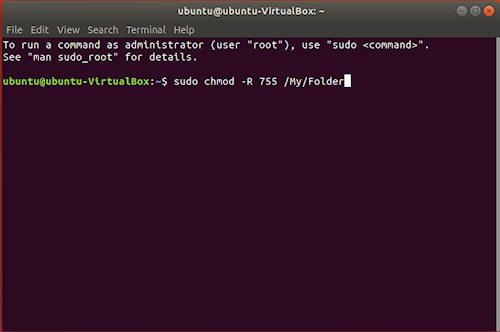
Introduction To Linux File Permissions Attributes Chmod Globo Tech

Use Of Chmod Command In Linux Devopsdex

Linux Unix Changing Permissions With Chmod Vinish Kapoor S Blog

What Is Chmod 777 How To Change File Permissions For Linux Tech Ninja Pro

Understanding Basic File Permissions And Ownership In Linux The Geek Diary

A Unix And Linux Permissions Primer Daniel Miessler

Chmod 777 In Terminal The Command To Make All Changes Affect Every File And Folder Ask Ubuntu
Your Own Linux Chmod Basics Of Files Directories Permissions And Use Of Chmod
Linux Chmod Tips

Restore Executable Permission To Chmod Command In Linux Ostechnix

What Is A Sticky Bit And How To Set It In Linux The Linux Juggernaut
:max_bytes(150000):strip_icc()/i7guGwCYcn-34e068e148ae4e918b29c86cd2d5740e.png)
Configuring Unix Linux File And Directory Access Rights

Explained How To Use Chmod Command Complete Guide Youtube

Understanding Linux Permissions And Chmod Usage

Permissions In Linux Geeksforgeeks
Why Would Using Chmod 777 Recursively From The Root Cause A Linux Box To Not Boot I Could Understand This If I Were Limiting Permissions But Why Would Adding Permissions Cause This

Chmod Command In Linux With Examples Geeksforgeeks

Chmod Recursive Change Permissions Recursively On Files Folders

How To Use Chmod And Chown Command In Linux

Linux Chmod Command Tutorial With Examples To Change Permission Of Files And Folders Poftut

How To Display File Permissions In Octal Format In Linux Kompjuteras

Linux Chmod Command Utility Software Computer File

Chmod Cheatsheet Linux

Pin By Dr Stefan Gruenwald On Cheatsheets Computer Science Programming Learn Javascript Linux Operating System

The Basics Of The Chmod Command Pi My Life Up
/GettyImages-1021092796-ea8c63ee76f84bd5bf98c4222337fbb4.jpg)
How To Use The Chmod Command In Linux
Q Tbn 3aand9gcq1nsq3kxri7ryrifobs2rfobawbv4hezfw9 Ldf4feblahyn09 Usqp Cau

How To Use Chmod Command In Linux Explained With Examples
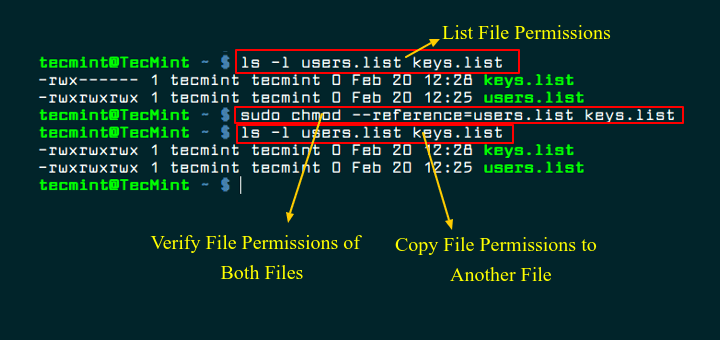
How To Copy File Permissions And Ownership To Another File In Linux

Linux Chmod Command Linuxfordevices

Understand Linux File Permissions Using Chmod And Chown Commands Programming Tips For Versatile Coders

Linux Chmod Command Linuxfordevices

Linux Chmod Chown Syntax And Chmod Chown Examples
Q Tbn 3aand9gcs J72hjomdluhqe6xjivy M6yrjmkqx9x3z3ps Rpnb8by3w7z Usqp Cau

Permissions In Linux Geeksforgeeks

Chmod Recursive Change Permissions Recursively On Files Folders

Learning The Shell Lesson 9 Permissions
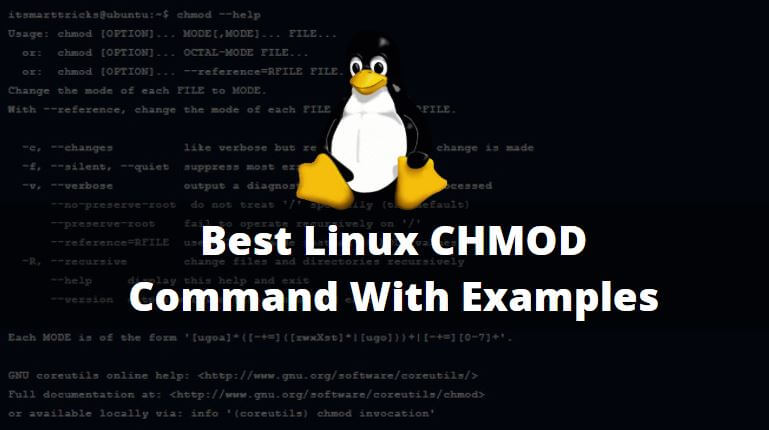
Best Linux Chmod Command With Examples It Smart Tricks

Permissions Why Use Chmod Instead Of Chmod U Rw Go R Unix Linux Stack Exchange

Numeric Permissions Table Linux Chmod Command Linux Permissions
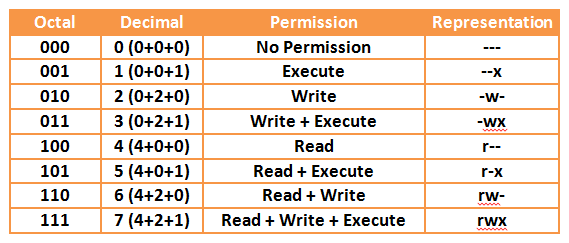
Your Own Linux Chmod Basics Of Files Directories Permissions And Use Of Chmod

Linux Commands Most Important Linux Commands Edureka

This Chmod Calculator Makes Creating Chmod Commands A Cakewalk Hongkiat

How To Change Directory Permissions In Linux Pluralsight

Understanding Unix Permissions And File Types Unix Linux Stack Exchange

How To Chmod Files Only On Linux

Chmod Shortcuts For Linux

Chmod Command In Linux With Examples Geeksforgeeks
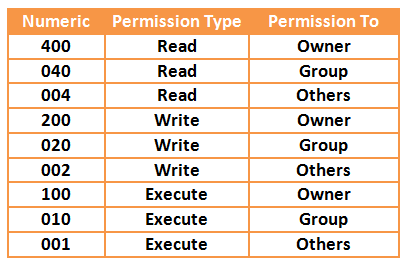
Your Own Linux Chmod Basics Of Files Directories Permissions And Use Of Chmod

Chmod Command In Linux Alien Coders

Chmod Wikipedia

Solved File Permissions In Linux Can Be Set Using A 3 Dig Chegg Com
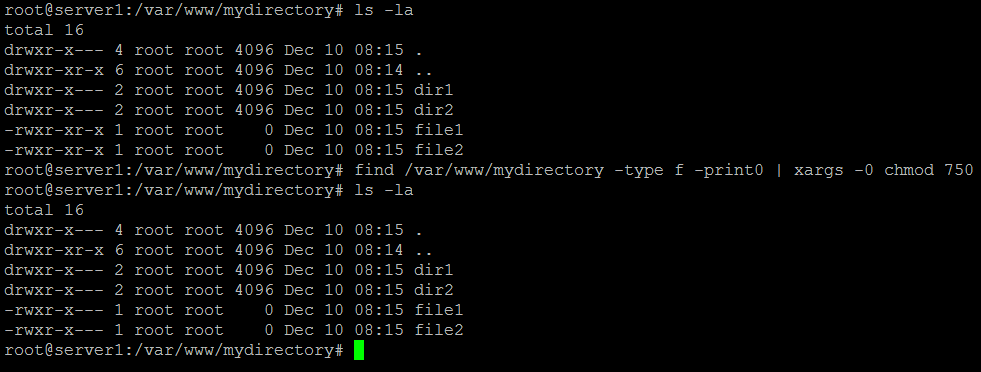
How To Chmod Files Only On Linux
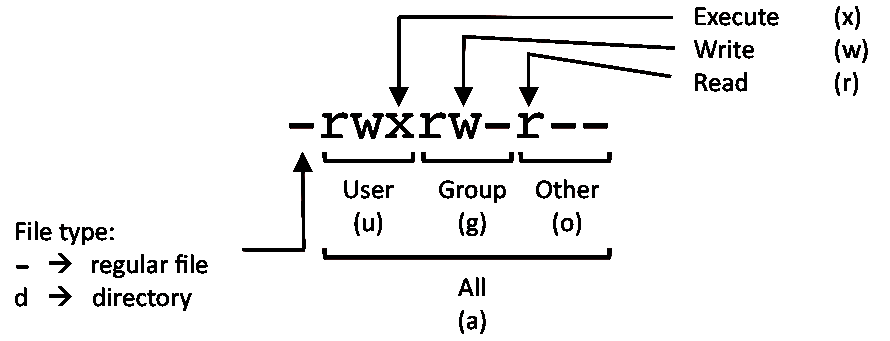
Linux Commands Cheat Sheet Linux Training Academy

Linux File Permissions Tutorial How To View And Change Permission

Linux Command Line Basics Part 4 I Have A Pc I Have A Pc

Linux And Unix Chmod Command Tutorial And Examples Xsofthost

How Did The Number 777 In Chmod 777 Come Out Under Linux Laptrinhx

Chmod 777 755 655 644 And More Permissions Linux Files Tutorials
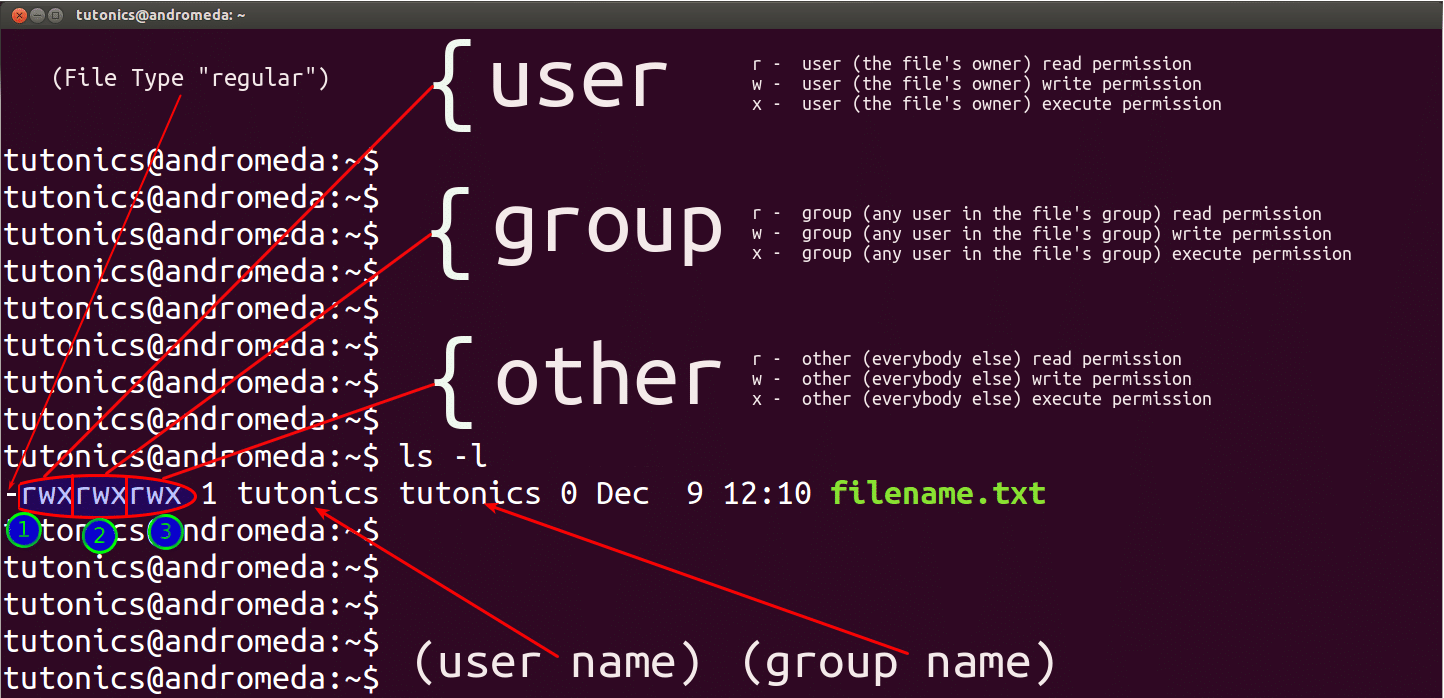
Linux File Permissions Tutorial For Beginners
1

Modify File Permissions With Chmod Linode

Linux Permissions Guide Plex Support

Chmod Command Examples In Unix Linux Lpi Central

How To Run A Script In Linux Nixcraft
Q Tbn 3aand9gcs Trmaopb41lzfo2wl Mi6olorurkywaddbudhnw Ne1mor3ct Usqp Cau

9 Quick Chmod Command Examples In Linux

Chmod 777 755 655 644 And More Permissions Linux Files Tutorials

8 Linux Chmod Command Examples To Understand It The Linux Juggernaut

Unix Linux Os X File Permissions

Use Of Chmod Command In Linux Devopsdex

What Is Chmod 777

How To Use The Chmod Command On Linux

Chmod 777 Or 755 Learn To Use Chmod Command With Examples

Linux Chmod Chown Syntax And Chmod Chown Examples

How To Run Sh File In Linux How To Use Linux

Chmod Command In Unix Learn Unix Online Fresh2refresh Com

Best Linux Chmod Command With Examples

9 Quick Chmod Command Examples In Linux Summary Networks

Linux File Permissions And Chmod Doug Vitale Tech Blog

Linux Terminal File Permissions Chmod Chown And Chgrp Youtube

How To Use Chmod Command In Linux Explained With Examples

Linux Chmod Command Clearly Explained Codedodle

Restore Executable Permission To Chmod Command In Linux Ostechnix

Linux And Unix Chmod Command Knowledge Hub

How To Change File Permissions Recursively With Chmod In Linux

How To Use Chmod Command In Linux Explained With Examples

Workbook 4 File Ownerships And Permissions Ppt Video Online Download

Linux Chmod Example Linux Hint

11 Popular Unix Linux Chmod Command Examples To Change File Permissions Cyberithub

Linux Unix Permissions And Attributes Linuxsecrets
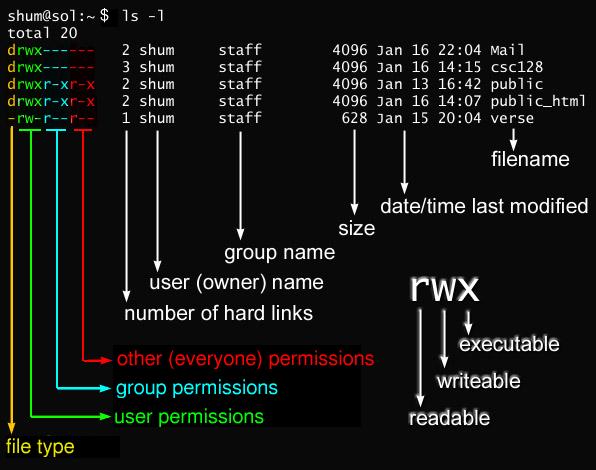
Javarevisited 10 Example Of Chmod Command In Unix Linux

Filepermissions In Linux

Unix Permissions

Linux File Permission Javatpoint

Chmod 7777

Chmod 777 What Does It Really Mean Make Tech Easier



